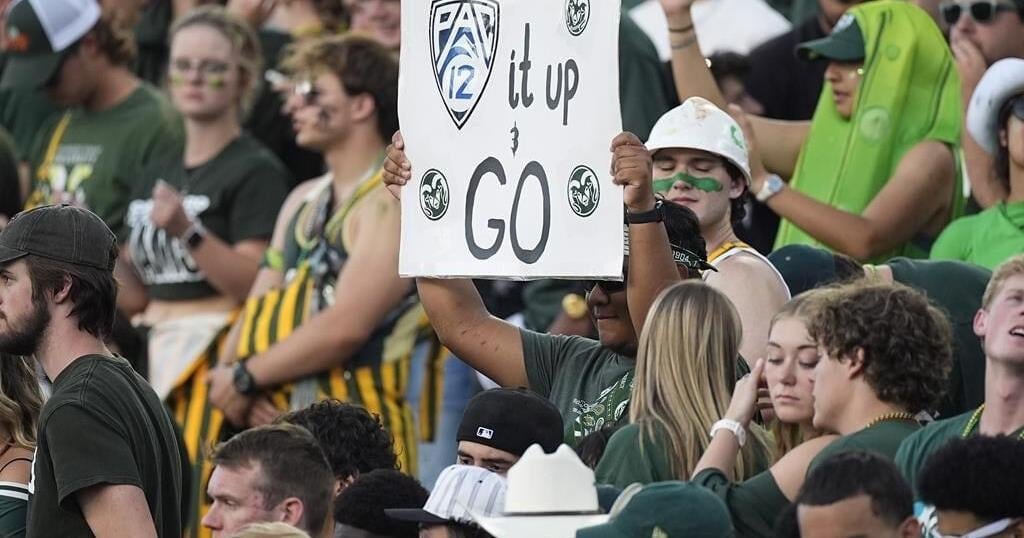The Pac-12 is suing the Mountain West over what it calls an unlawful and unenforceable “poaching penalty” that would cost the rebuilding conference more than $40 million for adding Boise State, Fresno State, Colorado State and San Diego State, according to a lawsuit filed Tuesday in federal court.
The antitrust complaint was filed in the U.S. District Court of the Northern District of California and is seeking a declaratory judgment by a judge.
“The action challenges an anticompetitive and unlawful ‘Poaching Penalty’ that the MWC imposed on the Pac-12 to inhibit competition for member schools in collegiate athletics,” the lawsuit said.
The Mountain West did not immediately respond to a request from The Associated Press seeking comment.
The Mountain West has exit fees of upward of $17 million for departing schools. Those fees can increase depending on how much advance notice a school provides. There also are poaching fees that were put in place in the Mountain West’s football scheduling agreement with Oregon State and Washington State, the only current Pac-12 members this season.
The fee starts at $10 million and increases by an increment of $500,000 for every additional school the Pac-12 adds from the Mountain West. With four already on board, the total is $43 million.
The Pac-12 also extended invitations on Monday to Mountain West schools Utah State and UNLV.
Utah State was admitted, according to the lawsuit, though neither the school nor the conference has made an official announcement.
Adding Utah State and UNLV would cost the Pac-12 another $24.5 million and leave the Mountain West with only six members, two short of what is required to be recognized by the NCAA and College Football Playoff.
The Pac-12 contends in the lawsuit that the “severe” exit fees the Mountain West has in place already compensate for the loss of departing members.
The Pac-12 argues the poaching penalty had nothing to do with the intent of the deal between Oregon State and Washington State and the Mountain West, which was to provide those schools with six football opponents this year for a $14 million payment to the league.
“It extends beyond the Scheduling Agreement’s terms, it does not affect the schedule in any respect, and it does not in any way impact the amount of football played, games scheduled or anything related to the 2024-25 scheduling of games,” the lawsuit said.
“Instead, the Poaching Penalty serves only to increase the MWC’s profits by locking up its member schools and preventing them from leaving for a competitor (Pac-12).”
The scheduling deal was not renewed for next year.
Oregon State and Washington State are in the first year of a two-year NCAA grace period during which they are operating the Pac-12 as a two-team conference.
By 2026, the Pac-12 needs at least eight members to be recognized as a conference by the NCAA and CFP.
The first phase of Pac-12 expansion began two weeks ago when it announced the additions of Boise State, Fresno State, San Diego State and Colorado State, four of the Mountain West’s traditionally most successful football programs.
The Pac-12 then targeted a group of American Athletic Conference schools but was rebuffed by Memphis, UTSA, Tulane and South Florida.
As the Pac-12 pivoted back to Mountain West schools, the Mountain West was trying to lock up its eight remaining members through a grant of rights agreement that binds schools together through the conference via television rights.
Some Mountain West schools signed a memorandum of understanding and returned it to the conference on Monday, but when Utah State did not, it allowed the others to reconsider.
Now, with the Pac-12 suing the Mountain West, it’s unclear whether either conference can move forward.
___
Follow Ralph D. Russo at https://twitter.com/ralphDrussoAP
___
Get poll alerts and updates on the AP Top 25 throughout the season. Sign up here. AP college football: and
